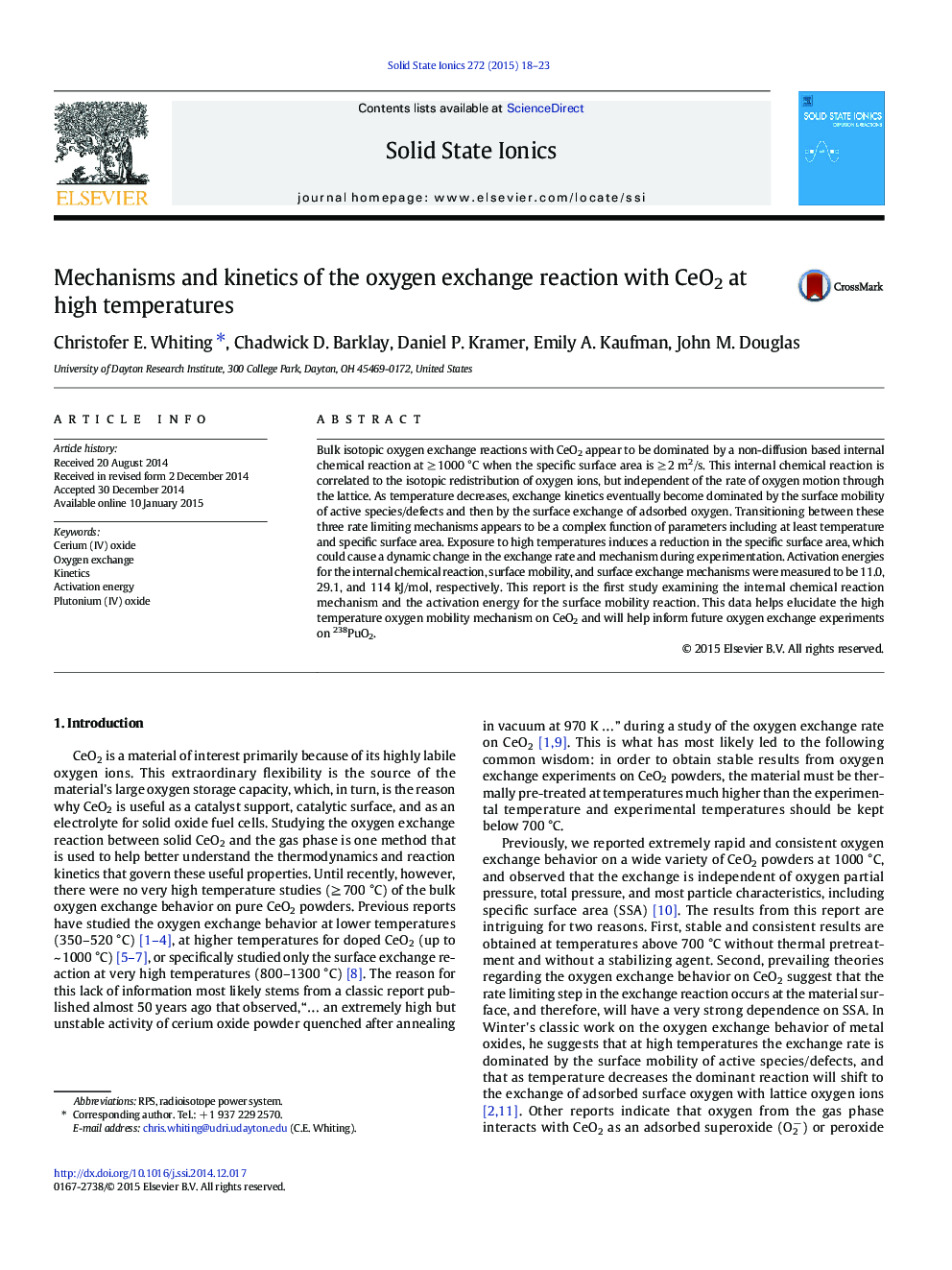| Article ID | Journal | Published Year | Pages | File Type |
|---|---|---|---|---|
| 1296316 | Solid State Ionics | 2015 | 6 Pages |
•Ea for surface exchange, surface mobility, and internal chemical reaction is reported.•Internal chemical reaction is related to redistribution of oxygen ions in the lattice.•Internal chemical reaction is independent of ionic mobility.•Experimental temperatures can reduce specific surface area and complicate results.•Results may help design and interpret future exchange studies on actinide dioxides.
Bulk isotopic oxygen exchange reactions with CeO2 appear to be dominated by a non-diffusion based internal chemical reaction at ≥ 1000 °C when the specific surface area is ≥ 2 m2/s. This internal chemical reaction is correlated to the isotopic redistribution of oxygen ions, but independent of the rate of oxygen motion through the lattice. As temperature decreases, exchange kinetics eventually become dominated by the surface mobility of active species/defects and then by the surface exchange of adsorbed oxygen. Transitioning between these three rate limiting mechanisms appears to be a complex function of parameters including at least temperature and specific surface area. Exposure to high temperatures induces a reduction in the specific surface area, which could cause a dynamic change in the exchange rate and mechanism during experimentation. Activation energies for the internal chemical reaction, surface mobility, and surface exchange mechanisms were measured to be 11.0, 29.1, and 114 kJ/mol, respectively. This report is the first study examining the internal chemical reaction mechanism and the activation energy for the surface mobility reaction. This data helps elucidate the high temperature oxygen mobility mechanism on CeO2 and will help inform future oxygen exchange experiments on 238PuO2.
